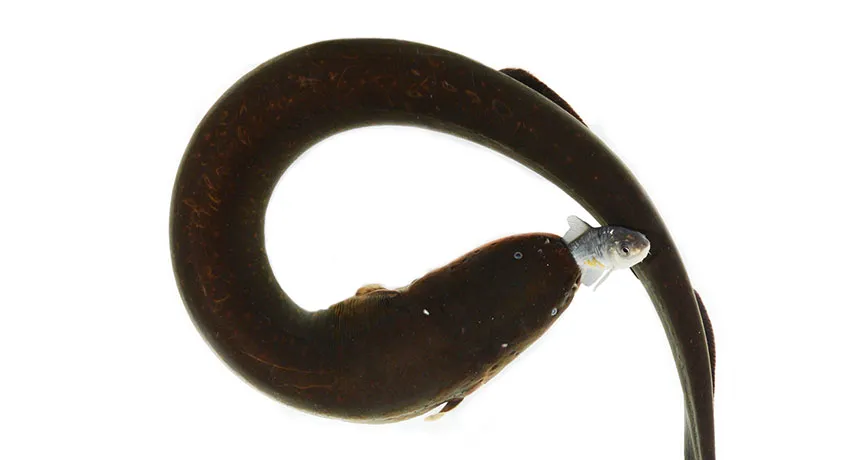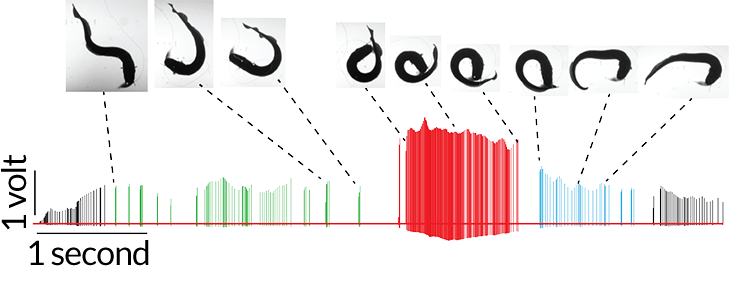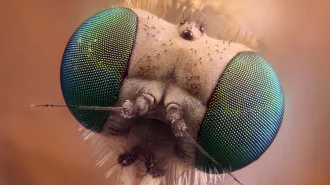How electric eels put more zip in their zap
Simple move makes attack more shocking to prey

GOTCHA When an electric eel’s prey fights back, the eel can simply reposition its body to intensify the effect of its shocks. And the prey gets so, so tired.
K.C. Catania
Electric eels are even more shocking than biologists thought. When prey fights back, eels just — curl their tails.
Muscle has evolved “into a battery” independently in two groups of fishes, explains Kenneth Catania of Vanderbilt University in Nashville. Smaller species send out slight tingles of electric current that detect the fish’s surroundings in murky nighttime water. People can handle these small fishes and not feel even a tickle. But touching the bigger Electrophorus electricus (a member of a South American group of battery-included fishes)“is reminiscent of walking into an electric fence on a farm,” Catania says. (He knows, unintentionally, from experience.)
The modified muscle that works as an electricity-generating organ in the eel has just on/off power. But eels have a unique way of intensifying the effect, Catania reports October 28 in Current Biology.
Catania has tussled with eels using what he calls his electric eel chew toy — a dead fish on a stick with electrodes inside the carcass to measure current. When fighting difficult prey Iike the recalcitrant toy, eels curl their tails toward the fish struggling in their jaws. This bend puts the electrically negative tail-end of the long battery organ closer to the electrically positive front end, effectively concentrating the electric field on the prey. An eel’s tail curl can double the strength of the electric field convulsing the prey.
Story continues after graph
Feel the buzz

As an electric eel curls its body (shown in upper panels), the voltage measured in the prey rises when the head and tail draw near enough to concentrate the eel’s electric field (chart below).
Eel shocks hijack nerves that control prey muscles, making them twitch and clench, Catania discovered in previous research (SN: 1/10/15, p. 14). That eel hack explains how the intensified curling attack completely stills prey: Muscles just get exhausted. Temporarily immobilized prey can’t escape as an eel opens its jaws to swallow its meal whole.
Eels are using electricity like a venom, Catania says. These fish “might be one of the most sophisticated predators on the planet,” he says.
But he quickly speaks up on their behalf. “There’s a lot of crazy stuff on TV,” he says. “But I have never found a reputable source — and I’m not even sure I have found a disreputable source — that eels kill people.”
|
DEEK! EEL ATTACK! In a laboratory tank, electric eels grapple with a fish carcass wired with equipment that records the voltage that would be experienced by real prey. K.C. Catania |







